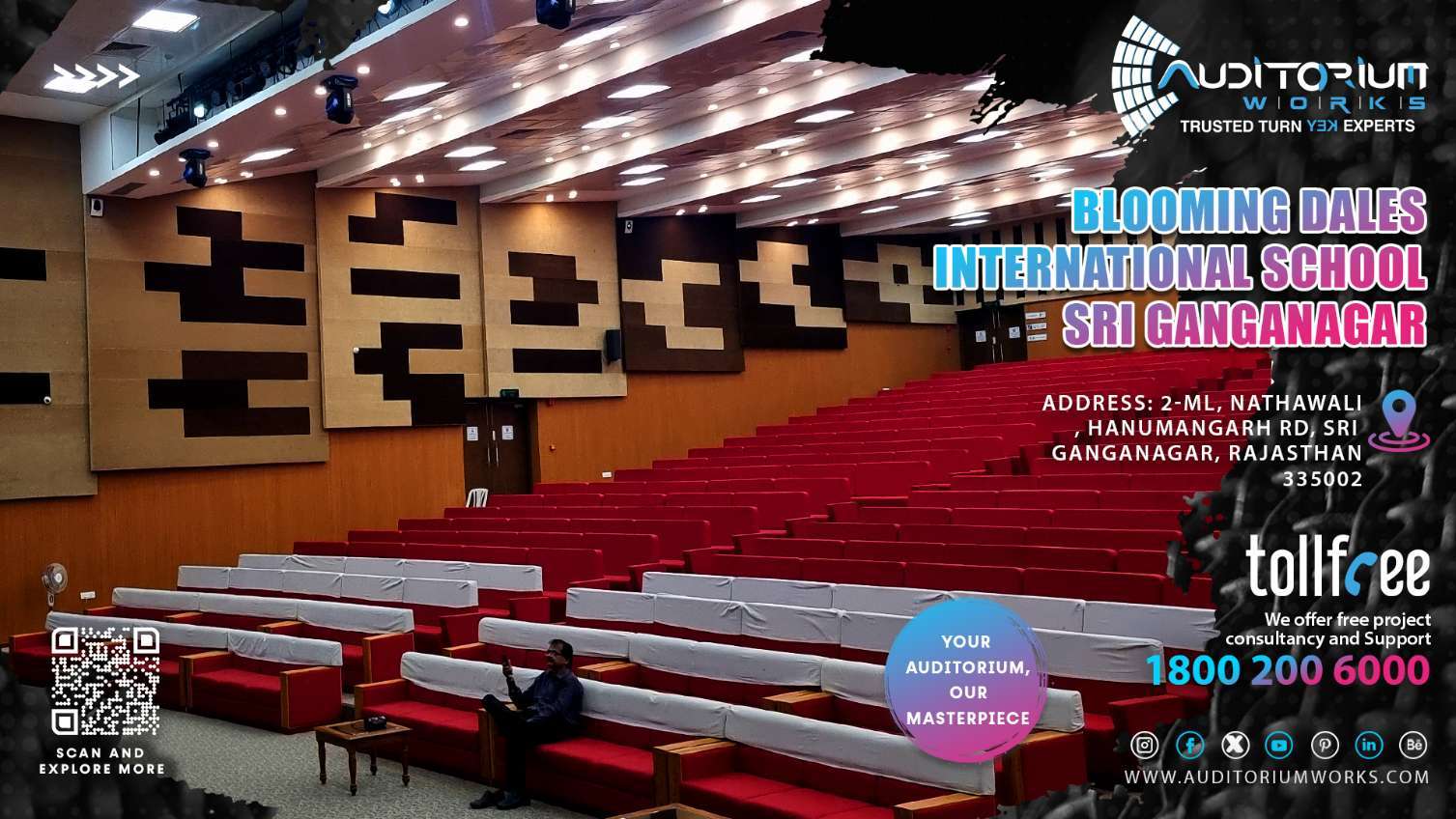Auditorium Soundproofing Solutions: Minimizing Noise and Maximizing Clarity
The Challenge of Auditorium Acoustics
Auditoriums, by their very nature, are designed to amplify sound, making them ideal for performances, presentations, and gatherings. However, this amplification also presents a significant acoustic challenge: controlling unwanted noise and ensuring optimal sound clarity. Poor acoustics can lead to a muffled, echoing environment, hindering audience comprehension and diminishing the overall experience. External noise intrusion, internal reverberation, and sound bleed from adjacent spaces are common culprits that can significantly impact the functionality and enjoyment of an auditorium. Understanding these acoustic problems is the first step towards implementing effective soundproofing solutions.
Identifying Noise Sources and Acoustic Deficiencies
Before embarking on any soundproofing project, a thorough acoustic assessment is crucial. This involves identifying the primary sources of noise pollution, both internal and external. Common external sources include traffic noise, HVAC systems, and nearby construction. Internal sources can range from mechanical equipment hum to excessive reverberation caused by hard, reflective surfaces like concrete walls and ceilings.
An acoustic analysis should also pinpoint specific acoustic deficiencies within the auditorium, such as flutter echoes (rapid successions of echoes between parallel surfaces), sound focusing (concentration of sound in specific areas), and areas with poor sound distribution. Sophisticated acoustic modeling software can be used to simulate sound behavior within the space and identify problem areas with pinpoint accuracy.
Soundproofing Materials and Techniques
Once the noise sources and acoustic deficiencies are identified, the next step is selecting the appropriate soundproofing materials and techniques. There’s no one-size-fits-all solution; the best approach depends on the specific characteristics of the auditorium and the desired acoustic outcome.
Sound Isolation: Blocking External Noise
Sound isolation techniques aim to prevent external noise from entering the auditorium. This often involves improving the sound transmission class (STC) of the walls, doors, and windows. Strategies include:
Mass-Loaded Vinyl (MLV): A dense, flexible material that effectively blocks sound transmission. It can be applied to walls, ceilings, and floors to add mass and reduce vibrations.
Soundproof Doors and Windows: Specialized doors and windows designed with multiple layers of materials and airtight seals to minimize sound leakage.
Acoustic Sealants and Caulks: Used to seal gaps and cracks around doors, windows, and other openings, preventing sound from escaping or entering.
Double-Wall Construction: Creating a decoupled wall system with an air gap between two layers of wall material, significantly reducing sound transmission.
Acoustic Absorption: Reducing Reverberation
Acoustic absorption techniques focus on reducing reverberation and improving sound clarity within the auditorium. These materials absorb sound energy rather than reflecting it.
Acoustic Panels: Fabric-wrapped panels filled with sound-absorbing materials like fiberglass or mineral wool. They can be strategically placed on walls and ceilings to absorb sound and reduce echoes.
Acoustic Baffles and Clouds: Suspended from the ceiling, these elements provide additional sound absorption without covering the entire surface. They are particularly effective in large, high-ceilinged spaces.
Bass Traps: Designed to absorb low-frequency sound waves, which can be difficult to control with standard acoustic panels. They are typically placed in corners where bass frequencies tend to accumulate.
Acoustic Curtains and Drapes: Thick, heavy curtains can absorb sound and help to dampen reverberation, especially when used to cover large windows or walls.
Diffusion: Scattering Sound Energy
Diffusion techniques aim to scatter sound energy evenly throughout the auditorium, preventing sound focusing and creating a more balanced and natural sound.
Acoustic Diffusers: Surfaces with irregular shapes and depths that scatter sound waves in multiple directions. They can be made from wood, metal, or other materials.
QRD Diffusers (Quadratic Residue Diffusers): A type of diffuser with a specific pattern of wells and ridges that effectively scatters sound over a wide range of frequencies.
Polycylindrical Diffusers: Curved surfaces that diffuse sound in a more subtle and natural way.
Integrating Soundproofing with Aesthetics
Effective auditorium soundproofing shouldn’t compromise the aesthetic appeal of the space. Modern acoustic materials are available in a wide range of colors, textures, and designs, allowing for seamless integration with the overall architectural design. Fabric-wrapped acoustic panels can be customized with printed graphics or artwork, while acoustic diffusers can be designed to complement the existing decor. The key is to collaborate with an experienced acoustic consultant who can balance acoustic performance with aesthetic considerations.
The Importance of Professional Acoustic Consulting
Soundproofing an auditorium is a complex undertaking that requires specialized knowledge and expertise. A professional acoustic consultant can provide valuable guidance throughout the entire process, from initial assessment and design to material selection and installation. They can also conduct post-installation testing to ensure that the soundproofing solutions are performing as intended. Investing in professional acoustic consulting can save time, money, and frustration in the long run, ensuring that the auditorium achieves its full acoustic potential.
Long-Term Acoustic Management
Once the initial soundproofing measures are implemented, ongoing acoustic management is crucial to maintaining optimal sound quality. Regular inspections of acoustic materials, adjustments to sound reinforcement systems, and periodic acoustic testing can help identify and address any emerging acoustic issues. Furthermore, training staff on proper microphone techniques and sound system operation can contribute to a more consistent and enjoyable auditory experience for all. By proactively managing the acoustics, the auditorium can continue to provide a clear, balanced, and immersive sound environment for years to come.



